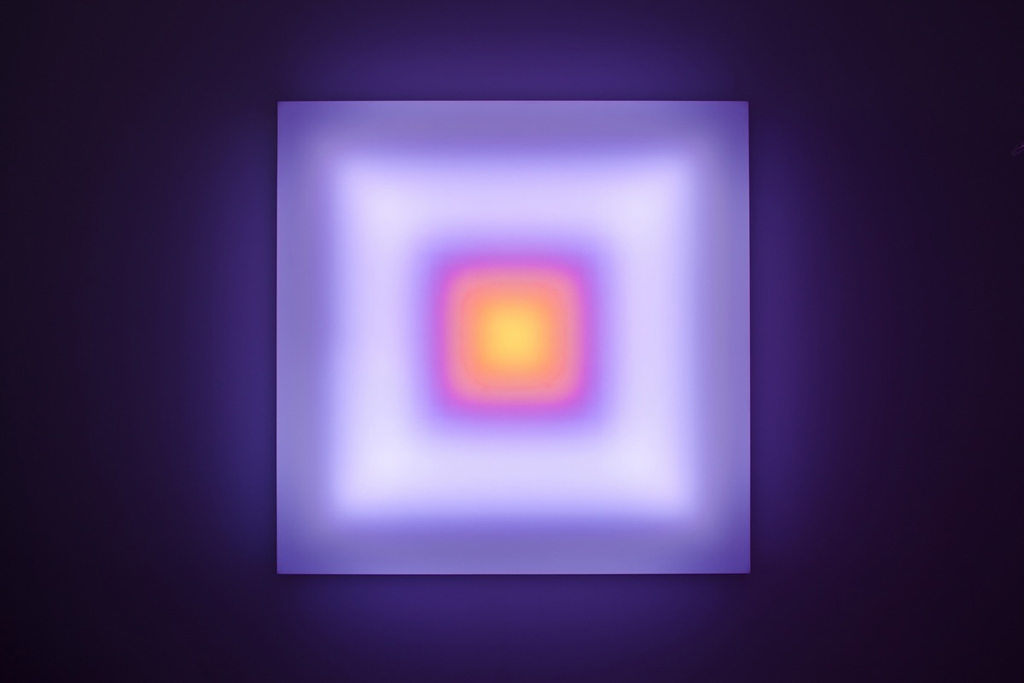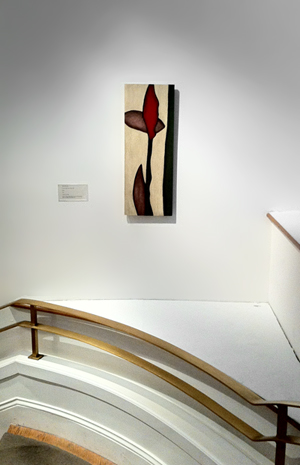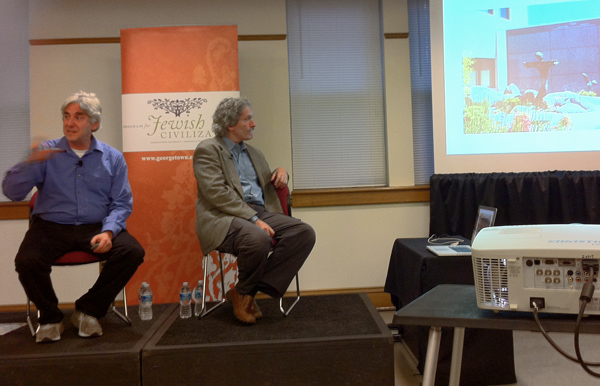
Leo Villareal, Scramble (2011). Light-emitting diodes, microcontroller, custom software, circuitry, wood, plexiglass, 60 x 60 inches. Courtesy of Conner Contemporary Art, Washington, D.C.
In June of this year I moderated a captivating conversation between artists Frank Stella and Leo Villareal at the Phillips Collection during a symposium held in conjunction with our exhibition Kandinsky and the Harmony of Silence. I was very pleased to learn during our Phillips trip to the Miami Beach art fairs last week that Leo Villareal was so inspired by his encounter with Stella at the Phillips that he created a new light work in homage to the artist, which was unveiled in Conner Contemporary Art’s booth at the PULSE art fair. The work, entitled Scramble, consists of a square light box whose rapidly changing light-emitting diodes recreate the color-shift effect of Stella’s 1967 sets for Merce Cunningham’s dance piece of the same title. For Cunningham’s Scramble, Stella stretched vividly-colored cloth over rectangular aluminum frames and mounted them onto casters that were moved quickly around the stage resulting in an ever-shifting collage of purple, blue, red , green, yellow, and orange. Stella later created his celebrated Scramble series of paintings and prints made up of concentric squares of varying colors.




